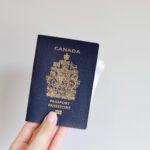Demystifying the Canada Immigration Application: A Detailed Walkthrough
The Canadian immigration process, while offering many opportunities for a new life in Canada, can be complex and, at times, challenging. The key to a successful immigration journey lies in understanding the application process. This comprehensive guide aims to unravel the process of applying for immigration to Canada, making it simpler and more manageable.
Understanding Immigration Categories
Initiating the immigration process necessitates understanding the myriad categories one can apply to. These pathways, tailored to fit an array of personal circumstances and aspirations, include programs such as the Express Entry and the Provincial Nominee Programs. Based on a points system, the Express Entry program is geared towards skilled workers, assessing their age, education, language proficiency, and work experience. Concurrently, the Provincial Nominee Programs enable specific Canadian provinces and territories to nominate individuals expressing interest in settling within their boundaries.
Furthermore, there are Family Sponsorship, Student Visas, Visitor Visas, and Investor, entrepreneur and self-employed Programs. Family Sponsorship allows Canadian citizens or permanent residents to sponsor their family members’ immigration. Those interested in Canadian educational opportunities may find the Student Visa program fitting, while the Visitor Visa caters to those planning short visits. Lastly, the Investor, entrepreneur and Self-employed Programs are intended for individuals prepared to make substantial investments and run their businesses in the Canadian economy. Recognizing the category that corresponds closely to your circumstances and immigration goals is paramount in embarking on your journey.
Express Entry Application
The Express Entry category is a highly sought-after route for skilled immigrants aiming to work and live in Canada. Within this category are three primary programs: the Federal Skilled Workers Program, the Federal Skilled Trades Program, and the Canadian Experience Class. The Federal Skilled Workers Program targets individuals with skills in demand in Canada’s labour market. The Federal Skilled Trades Program, on the other hand, focuses on those who have essential trade skills and experience.
The Canadian Experience Class is specifically designed for those with professional or skilled work experience in Canada. A unique aspect of these programs is the Comprehensive Ranking System (CRS), a points-based system used to assess and score a candidate’s profile based on age, education, skills, work experience, and language proficiency. They understand the specifics of these programs and how the CRS functions, which is vital for those considering the Express Entry route for immigration.
Provincial Nominee Program Application
Canadian immigration also offers a tailored approach that caters to the specific needs of its provinces and territories through the Provincial Nominee Programs (PNPs). These programs are designed to meet the provinces’ and territories’ individualized economic conditions, encouraging balanced growth throughout the country. As an aspiring immigrant, you can explore these programs to determine which province or territory aligns best with your professional qualifications and personal aspirations.
Each province or territory has its unique PNP, with criteria set based on its particular labour market needs. Therefore, your fantastic skill set could be highly sought after in one province but not as much in another. Researching and understanding the demands of each province or territory is essential to target your application effectively. Matching your skills and experience with the specific needs of a province or territory can significantly increase your chances of successful immigration to Canada.
Family Sponsorship Application
Canada’s Family Sponsorship Program provides a path for immigration if you have relatives residing there as citizens or permanent residents. Under this program, family members can sponsor relatives to immigrate to Canada, fostering family reunification. It’s vital to understand the process involved, starting with assessing the eligibility of both the sponsor and the person being sponsored. This includes factors such as the sponsor’s financial capability and the relationship between the two parties.
In addition to understanding the process and eligibility criteria, it’s also crucial to comprehend the responsibilities that come with sponsorship. Once the backing is approved, the sponsoring individual assumes the responsibility of financially supporting the arrival, ensuring they do not need financial assistance from the government. The commitment lasts for a specified period, depending on the sponsored individual’s age and relationship with the sponsor. Being well-informed about these responsibilities is critical before embarking on the sponsorship process.
Student Visa Application
If your goal is to further your education in Canada, applying for a student visa, formally known as a study permit, is the appropriate course of action. Understanding the eligibility criteria is the first step in this process. This includes having an acceptance letter from a designated learning institution in Canada, proving you have sufficient funds to cover your tuition fees, living expenses, and return travel, and showing that you are a law-abiding citizen with no criminal record who poses no risk to the country’s security.
The second part of the process is understanding how to apply. This involves preparing the necessary documents, such as proof of acceptance, proof of identity, and a letter of explanation. But securing a student visa is just the beginning. Many international students choose to stay in Canada after their studies. Understanding the opportunities for obtaining a post-graduation work permit, gaining valuable Canadian work experience, and pathways to the permanent residence can help turn your Canadian education into a longer-term investment in your future.
Visitor Visa Application
Obtaining a Visitor Visa, officially known as a Temporary Resident Visa (TRV), is the requisite path for visiting Canada briefly. The process of applying starts with understanding the application requirements. This typically includes proof of your home country ties, financial resources, the purpose of the visit, and the overall plans for your stay. In addition, it’s vital to provide a letter of invitation from someone who lives in Canada (if applicable) and undergo a medical exam if required.
To increase the chances of your Visitor Visa application being approved, making it as strong as possible is essential. This involves providing clear, accurate, and detailed information and ensuring all documents are completed correctly and thoroughly. Additional aspects to consider are your travel history, financial stability, and the overall purpose of your visit. Understanding the process and putting effort into a robust application can significantly enhance your chances of obtaining your Visitor Visa to explore Canada.
Work Permit Application
If you aim to work in Canada, comprehending the intricacies of applying for a work permit is essential. Work permits in Canada come in different types, such as open and employer-specific work permits. An open work permit allows you to work for any employer in Canada, while an employer-specific work permit restricts you to one specific employer. On the other hand, the IEC program is specifically designed for young people who want to work and travel in Canada, listed in the countries with the agreement. Candidates can apply for an open or employer-specific work permit through the International Experience Canadian Class.
Each type of work permit has its own set of requirements and eligibility criteria. For instance, an open work permit often requires the applicant to have a PR application in process or be the spouse of a full-time student or worker in Canada, and it also includes those that apply for a postgraduate work permit. An employer-specific work permit requires a positive Labour Market Impact Assessment (LMIA) from the employer or a Jb offer number. Obtaining these permits involves understanding these requirements, preparing the necessary documents, and submitting a thorough and accurate application. Ensuring you are fully informed about the process will benefit your successful application for a Canadian work permit.
Permanent Resident Application
Embarking on the journey to secure permanent residency in Canada involves several critical steps, starting with the application. Firstly, it’s essential to determine your eligibility for permanent residence under one of Canada’s various immigration programs, such as Express Entry, Provincial Nominee Program, or Family Class Sponsorship. Each of these programs has specific criteria that applicants must meet. Once you’ve identified a suitable program, the next step is to gather all the necessary documentation, including language test results, educational credential assessments, personal identification documents, and more.
After your application is prepared, the next step is to submit it to Immigration, Refugees and Citizenship Canada (IRCC). This step is followed by waiting while the IRCC reviews your application. You may also need to attend an interview or provide additional documentation during this stage. Once the IRCC has made their decision, you’ll be notified. If your application is approved, the final steps include receiving your Confirmation of Permanent Residence (COPR) and permanent resident card. Understanding each step of this journey can provide clarification and confidence as you navigate the complex process of securing permanent residence in Canada.
Immigrant Investor, entrepreneur, Sel-employed Program Application
These Immigrant Programs offer an attractive path for affluent individuals seeking to migrate to Canada by investing and bringing their managerial business expertise to the nation’s economy. The first step in navigating this program involves understanding its requirements. Prospective applicants must have substantial background expertise and net worth and be willing to invest significantly in the Canadian economy. The investment stimulates economic growth and job creation, a vital aspect of this program.
When it comes to the application process, it’s crucial to prepare thoroughly. As part of the process, potential candidates must prove their business experience, meet specific investment and net worth criteria, and demonstrate the intention to reside in any province except Quebec. The application comprehensively reviews your financial situation, business background, and investment potential. Therefore, clearly knowing these criteria and preparing accordingly can pave the way for a successful application. Be aware that these Immigrant Programs are subject to change, and it is always advised to check the most recent guidelines or work with a licensed immigration consultant to ensure compliance with the current regulations.
Application Refusals
Experiencing a visa or immigration application refusal can be discouraging, but it’s important to remember that it’s not the end of the road. Understanding common reasons for rejections can be instrumental in preventing similar outcomes in the future. Some of the usual reasons include incomplete applications, lack of supporting documents, insufficient funds, or misunderstanding of the requirements. It’s essential to thoroughly review all application requirements, provide complete and accurate information, and be transparent about your intentions to avoid these pitfalls.
However, if your application is refused, there are still steps you can take. Firstly, understand the reasons for the refusal; this is usually outlined in the refusal letter. Based on these grounds, you can consider reapplying and addressing the issues highlighted in your previous application. In some cases, you might also be eligible to appeal the decision or ask for judicial review. It’s crucial in such instances to consider seeking professional advice to understand your options better and create a plan of action. Remember, refusing is just a setback and does not eliminate your chances of achieving your immigration goals.
Conclusion
Grasping the intricacies of the Canadian immigration application process, including the correct documentation, such as your passport, is paramount for a successful journey to Canada. Armed with the information from this guide and the support of trusted immigration services, you’re stepping firmly on the path to actualizing your dream of life in Canada.





